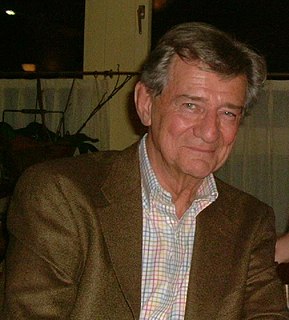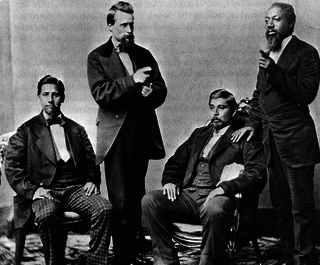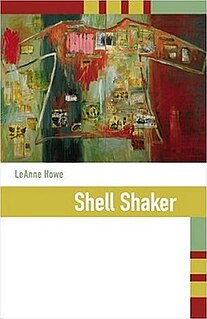Related Research Articles

Native American gaming comprises casinos, bingo halls, and other gambling operations on Indian reservations or other tribal lands in the United States. Because these areas have tribal sovereignty, states have limited ability to forbid gambling there, as codified by the Indian Gaming Regulatory Act of 1988. As of 2011, there were 460 gambling operations run by 240 tribes, with a total annual revenue of $27 billion.

The Pequot are a Native American people of Connecticut. The modern Pequot are members of the federally recognized Mashantucket Pequot Tribe, four other state-recognized groups in Connecticut including the Eastern Pequot Tribal Nation, or the Brothertown Indians of Wisconsin. They historically spoke Pequot, a dialect of the Mohegan-Pequot language, which became extinct by the early 20th century. Some tribal members are undertaking revival efforts.

The Mashantucket Pequot Tribal Nation is a federally recognized American Indian tribe in the state of Connecticut. They are descended from the Pequot people, an Algonquian-language tribe that dominated the southern New England coastal areas, and they own and operate Foxwoods Resort Casino within their reservation in Ledyard, Connecticut. As of 2018, Foxwoods Resort Casino is one of the largest casinos in the world in terms of square footage, casino floor size, and number of slot machines, and it was one of the most economically successful in the United States until 2007, but it became deeply in debt by 2012 due to its expansion and changing conditions.

The Native American Graves Protection and Repatriation Act (NAGPRA), Pub. L. 101-601, 25 U.S.C. 3001 et seq., 104 Stat. 3048, is a United States federal law enacted on November 16, 1990.

Leslie Marmon Silko is an American writer. A Laguna Pueblo Indian woman, she is one of the key figures in the First Wave of what literary critic Kenneth Lincoln has called the Native American Renaissance.

Gerald Robert Vizenor is an American writer and scholar, and an enrolled member of the Minnesota Chippewa Tribe, White Earth Reservation. Vizenor also taught for many years at the University of California, Berkeley, where he was Director of Native American Studies. With more than 30 books published, Vizenor is Professor Emeritus at the University of California, Berkeley, and Professor of American Studies at the University of New Mexico.

The Peoria are a Native American people. They are enrolled in the federally recognized Peoria Tribe of Indians of Oklahoma, now headquartered in Miami, Oklahoma.

The Osage Nation is a Midwestern Native American tribe of the Great Plains. The tribe developed in the Ohio and Mississippi river valleys around 700 BC along with other groups of its language family. They migrated west after the 17th century, settling near the confluence of the Missouri and Mississippi rivers, as a result of Iroquois invading the Ohio Valley in a search for new hunting grounds.

Blood quantum laws or Indian blood laws are laws in the United States and the former Thirteen colonies that define Native American status by fractions of Native American ancestry. These laws were enacted by the American government as a way to establish legally defined racial population groups. By contrast, many tribes and nations do not include blood quantum as part of their own enrollment criteria.

House Made of Dawn is a 1968 novel by N. Scott Momaday, widely credited as leading the way for the breakthrough of Native American literature into the mainstream. It was awarded the Pulitzer Prize for Fiction in 1969, and has also been noted for its significance in Native American anthropology.

The Confederated Tribes of the Grand Ronde Community of Oregon (CTGR) consists of twenty-seven Native American tribes with long historical ties to present-day western Oregon between the western boundary of the Oregon Coast and the eastern boundary of the Cascade Range, and the northern boundary of southwestern Washington and the southern boundary of northern California. The community has an 11,288-acre (45.7 km2) Indian reservation, the Grand Ronde Indian Reservation, which was established in 1855 in Yamhill and Polk counties.

The Eastern Pequot Tribal Nation is an American Indian tribe in southeastern Connecticut descended from the Pequot people who dominated southeastern New England in the seventeenth century. It is one of five tribes recognized by the state of Connecticut.

Paula Gunn Allen was a Native American poet, literary critic, activist, professor, and novelist. Of mixed-race European-American, Native American, and Arab-American descent, she identified with her mother's people, the Laguna Pueblo and childhood years. She drew from its oral traditions for her fiction poetry and also wrote numerous essays on its themes. She edited four collections of Native American traditional stories and contemporary works and wrote two biographies of Native American women.
Louis Dean Owens was a novelist and scholar who claimed Choctaw, Cherokee, and Irish-American descent. He is known for a series of Native-themed mystery novels and for his contributions to the then-fledgling field of Native American Studies. He was also a professor of English and Native American studies, and frequently contributed articles, literary criticism and reviews to periodicals. Owens committed suicide in 2002.

Shell Shaker (2001) is a novel by American LeAnne Howe. The novel's plot revolves around two tales of murder involving historical Choctaw political leaders. Set over a 200-year period, it focuses on several generations of the fictional Billy family, who try to keep the peace. It won the 2002 Before Columbus American Book Award.

In mythology and the study of folklore and religion, a trickster is a character in a story who exhibits a great degree of intellect or secret knowledge and uses it to play tricks or otherwise disobey normal rules and defy conventional behavior.
The impact of Native American gaming depend on the tribe and its location. In the 1970s, various tribes took unprecedented action to initiate gaming enterprises. In this groundbreaking revitalization of the Native American economy, they created a series of legal struggles between the federal, state, and tribal governments. Native American gaming has grown from bingo parlors to high-stakes gaming, and is deeply controversial. Disputes include tribal sovereignty, negative impact of gaming, and a loss of Native American culture. The Indian Gaming Regulatory Act was passed in 1988 to secure collaboration between the states and tribes and also for the federal government to oversee gaming operations. Gaming is extremely lucrative for several tribes, but it has also been unsuccessful in some instances.
The Trickster of Liberty is a 1988 novel by Gerald Vizenor that acts as a prequel to his earlier novels Bearheart: The Heirship Chronicles and Griever: An American Monkey King in China. The novel is a collection of stories about the mixedblood descendants of Luster Browne and their lives on the White Earth Indian Reservation. The novel continues Vizenor's focus on mixedbloods and tricksters and includes characters from the previous novels, including Griever de Hocus and China Brown from Griever and Eternal Flame from Bearheart.
Harold of Orange is a short film/comedy directed by Richard Weise and produced by Dianne Brennan, with a screenplay by Gerald Vizenor.
The Light People is a 1994 novel written by Gordon Henry. The book won the American Book Award in 1995. The Light People is a work of Native American fiction, composed of many distinct but ultimately interconnected stories happening in and around an Ojibwe village in northern Minnesota, and the Twin Cities.
References
- 1 2 3 Review by Louis Owens in American Indian Quarterly 17.1 (1993), pp. 101–102; accessed through JSTOR 19 February 2011.
- ↑ "The Heirs of Columbus", Encyclopedia of American Indian Literature, by Jennifer McClinton-Temple, Alan R. Velie, Facts on File, 2007, pp. 162–163.
- 1 2 Review by Robert Allen Warrior, in World Literature Today 66.2 (1992), p. 387; accessed through JSTOR, 19 February 2011.
- ↑ pp. 25–26
- ↑ pp. 28–34
- ↑ pp. 37–40
- ↑ pp. 7–8
- 1 2 Review by Elizabeth Blair in Wíčazo Ša Review 8.1 (1992), pp. 99–100; accessed through JSTOR 19 February 2011.